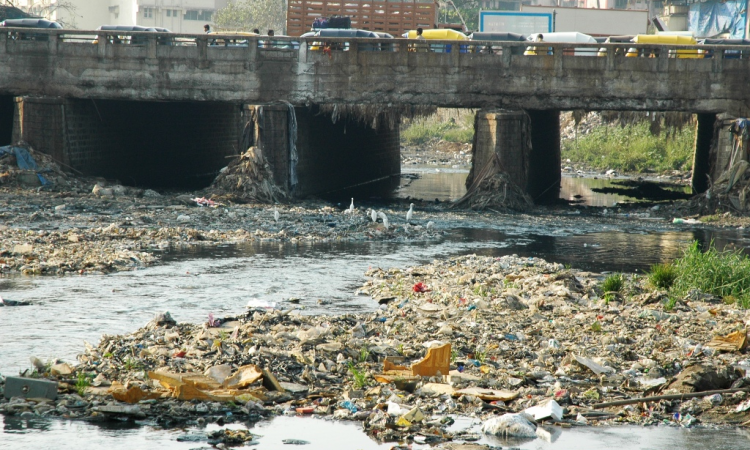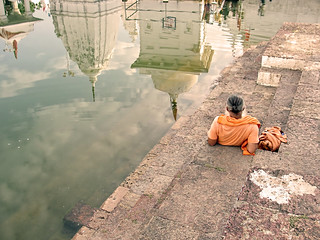
The magic that is a river, brings out a huge canvas of emotions even amongst the most hardened of us. We are in turn exalted and energised when we see a river but today, the river may, in all probability, invoke a feeling of disgust and sheer helplessness. In our relentless march to perceived ‘development’ we have dammed, mined, drained and commoditised this incredible, natural source, that is unfortunately not ours alone.
If it's not ours alone, then whose is it and what are the characteristics that define it? A deliberate debate at the recently concluded India Rivers Week, 2014, held in Delhi, worked to find an answer to this seemingly incongruous question.
Although, an earlier attempt by Himanshu Thakkar, SANDRP, did define a river in all its complexity, the IRW 2014 conference, came together to prepare an aspirational, visionary and implementable definition of rivers to underpin an India Charter for Rivers, which is in the process of being created and shared.
 So how would you define a river? What important aspect would you use to describe and accept, as an essential river characteristic? The first obvious thing for an entity to be a river is that it must have water that flows. Though that is an elementary and a basic criterion, a river is more than just that. Water flows even in manmade canals and irrigation channels, and storm drains too carry flowing wastewater. But as Ramaswamy R Iyer, stressed simply in his keynote “ rivers are more than just water.”
So how would you define a river? What important aspect would you use to describe and accept, as an essential river characteristic? The first obvious thing for an entity to be a river is that it must have water that flows. Though that is an elementary and a basic criterion, a river is more than just that. Water flows even in manmade canals and irrigation channels, and storm drains too carry flowing wastewater. But as Ramaswamy R Iyer, stressed simply in his keynote “ rivers are more than just water.”
So logically, a river is not static, nor an artificial drain, not saline and definitely not manmade.
Next, what does a river say to us? We all intuitively understand that rivers are, and have been, a life source in many ways. There are the fish, dolphin and other aquatic animals that live in it, as well as the micro climate along its banks that encourages an entirely distinct eco system dependent on the river and its characteristics alone.
A source of livelihood, a river sustains and helps conserve the bio diversity along its complete length.
Human beings have, for long, viewed rivers in a spiritual context. Many of our myths and fables are stories intertwined with rivers and the people who lived around them. They project a sense of connectedness - of people, cultures and even civilisations. They are a constantly changing fabric, from a languid, slow moving grace to a terrible, malevolent and unforgiving flood inducing avatar. They are hailed, prayed to, feared and loved as a living, breathing being.
Thus clearly, a river is a dynamic, living system too.
 But a river is not the property of a few. A natural system, it is of the ‘commons’, and belongs to humans, flora and fauna, supporting the needs of both sentient and non-sentient beings in its wake. A river thus fulfills basic geological, hydrological, ecological & socio-cultural or religious aspects of the region it flows in. It flows and all the other aspects simply seem to follow.
But a river is not the property of a few. A natural system, it is of the ‘commons’, and belongs to humans, flora and fauna, supporting the needs of both sentient and non-sentient beings in its wake. A river thus fulfills basic geological, hydrological, ecological & socio-cultural or religious aspects of the region it flows in. It flows and all the other aspects simply seem to follow.
In its totality, it is not just the manifested flow, but also includes the source, to where it flows, and all that it touches and gives life to, all along its path. It supports life and belongs to all.
Wherever rivers have been hijacked and river beds allowed to dry up, the complete water equilibrium of the area is affected. Groundwater recharge, transport of silt and sedimentation to the flood plains, and the maintenance of salinity level in its estuaries just before a river empties into the sea, are compromised.
As Manoj Mishra, PEACE Foundation, said, ”A river’s ‘dharma’ is to flow". It performs functions that are essential to its being. What we desire from it is our individual yearning, the services we utilize from it, are our own projected aspiration for our convenience and well being.
Ergo, the river definition must be a multi dimensional, multi faceted, descriptive phrase of words that encompasses the idea and the picture of a river as a sum total of all that it truly is.
For Ramaswamy R Iyer, the three crucial elements needed to define a river, without which the essence of a river are lost are:
the essence of a river are lost are:
- Aviralta or uninterrupted flow: Flow connectivity of a river cannot be compromised. By leaving empty long stretches of river bed without the river, as in the case of hydroelectric projects, river identity is lost. Unconnected water bodies simply are no longer a river anymore.
- Flow variation: Violent and destructive fluctuations in the water flow, where a river remains dry for 20-24 hours and encounters a 8 m water wall in the remaining 4 hrs, as in the case of run-of-the-river projects, can no longer be called a river.
- Nirmalta or absence of pollution: If pollution level rises, the river ceases to be a river.
These thoughts and ideas were the crux of the discussion on river definition. It was an attempt to move beyond the simplistic, minimal definition found in a dictionary, and to ascertain the features and characteristics that define a river, keeping in mind all its multi-hued aspects and dimensions.
The final definition that will be adopted is to be shared in the ‘ India Charter for Rivers’, soon to be made public.
This post presents the discussions during an intense debate on 'river definition' .The debate was held as a part of the India Rivers Week organized at New Delhi during 24-27th November, 2014.
/articles/what-river